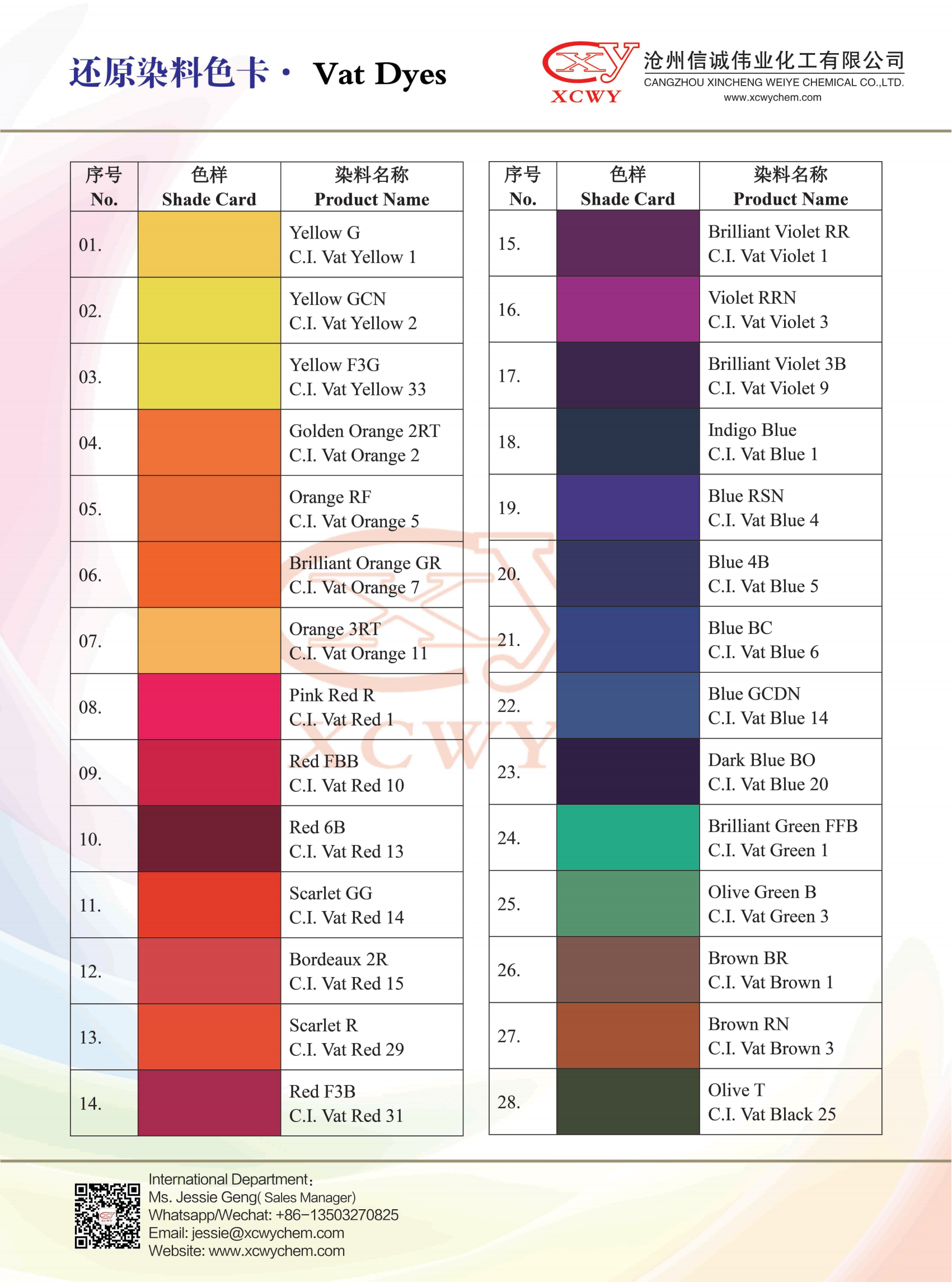The cutting process of vat dyes mainly involves the use of strong reducing agents under alkaline conditions to reduce them into the water-soluble sodium salt form of the chromophore. This process is a key step in the vat dyeing process, aimed at enabling the dye to dye fibers. The commonly used reducing agents include insurance powder, and its optimal use temperature in solution is 60 ℃. If the temperature is too high, a large amount of insurance powder will decompose. Therefore, controlling the temperature is an important factor in ensuring the dye reduction effect. In addition, the dissolution process of reducing dyes also involves temperature control, as temperature can affect the reduction conditions of the reducing agent, thereby affecting the dissolution effect of the dye.
The dyeing process of vat dyes generally includes the following basic steps:
Dye reduction: In alkaline media, under the action of strong reducing agents, the carbonyl groups in the molecular structure of dyes are reduced to hydroxyl groups, thereby transforming into the sodium salt of the chromophore, allowing dyes to dissolve in water and dye fibers.
Hidden color body oxidation: After dyeing the fiber, the hidden color body is restored to an insoluble dye lake on the fiber through oxidation treatment and fixed.
This process not only involves chemical changes, but also precise control of temperature, pH, and other conditions to ensure effective reduction of dyes and dyeing quality. Reductive dyes are widely used in the dyeing of cellulose fibers such as cotton fabrics due to their bright color, complete chromatography, and high dyeing fastness.
Contact person: Miss Jessie Geng
Email:jessie@xcwychem.com
Mobilephone/Whatsapp: +86-13503270825
Post time: Sep-26-2024






